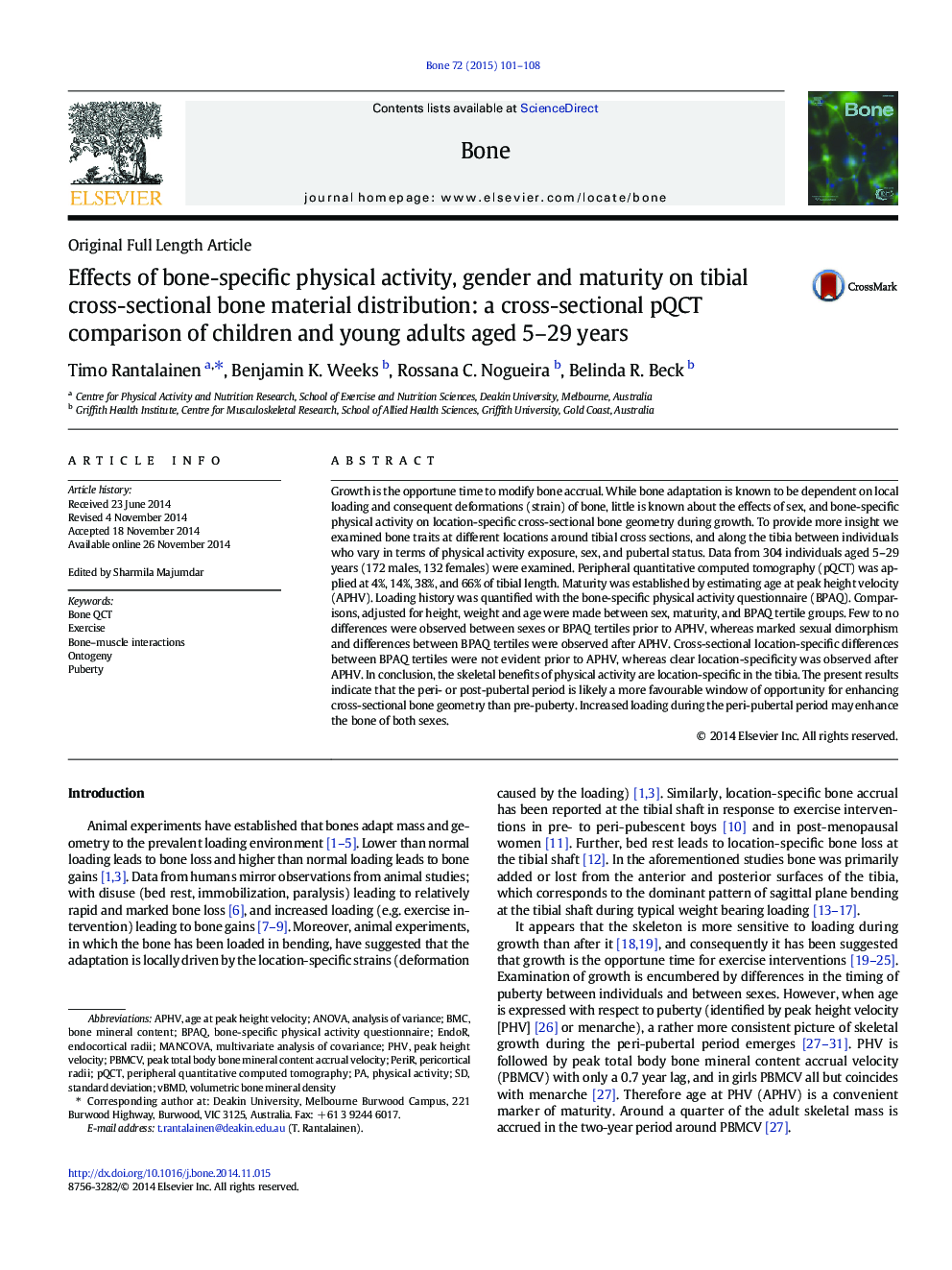| Article ID | Journal | Published Year | Pages | File Type |
|---|---|---|---|---|
| 2779176 | Bone | 2015 | 8 Pages |
•Tibial bone and bone-specific physical activity (BPAQ) were measured from adolescents and young adults.•The skeletal benefits associated with bone-specific physical activity were location-specific.•Peri- or post-pubertal period is likely a more favourable window of opportunity for positively modifying skeletal traits than pre-puberty.•Increased loading during the peripubertal period may be expected to be effective in both sexes.
Growth is the opportune time to modify bone accrual. While bone adaptation is known to be dependent on local loading and consequent deformations (strain) of bone, little is known about the effects of sex, and bone-specific physical activity on location-specific cross-sectional bone geometry during growth. To provide more insight we examined bone traits at different locations around tibial cross sections, and along the tibia between individuals who vary in terms of physical activity exposure, sex, and pubertal status. Data from 304 individuals aged 5–29 years (172 males, 132 females) were examined. Peripheral quantitative computed tomography (pQCT) was applied at 4%, 14%, 38%, and 66% of tibial length. Maturity was established by estimating age at peak height velocity (APHV). Loading history was quantified with the bone-specific physical activity questionnaire (BPAQ). Comparisons, adjusted for height, weight and age were made between sex, maturity, and BPAQ tertile groups. Few to no differences were observed between sexes or BPAQ tertiles prior to APHV, whereas marked sexual dimorphism and differences between BPAQ tertiles were observed after APHV. Cross-sectional location-specific differences between BPAQ tertiles were not evident prior to APHV, whereas clear location-specificity was observed after APHV. In conclusion, the skeletal benefits of physical activity are location-specific in the tibia. The present results indicate that the peri- or post-pubertal period is likely a more favourable window of opportunity for enhancing cross-sectional bone geometry than pre-puberty. Increased loading during the peri-pubertal period may enhance the bone of both sexes.
